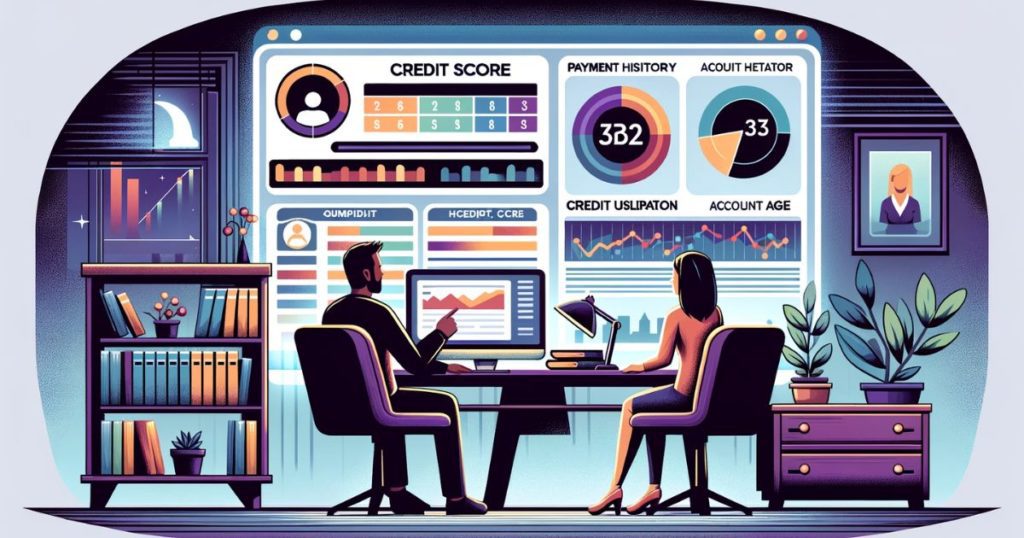Figuring out which credit scores are most important shouldn’t be a daunting task. The credit scores that are most important—the FICO Score and VantageScore
Whether you’re aiming to secure a mortgage, apply for a credit card, or simply enhance your financial well-being, understanding the intricacies of credit scores is your compass in this ever-changing financial landscape.
Overview
Credit scores are numerical representations of a person’s creditworthiness, based on their credit history.
- Purpose: They help lenders assess the risk of lending money. High scores indicate lower risk.
- Main Types: FICO Score and VantageScore are the most common.
- Score Range: Typically from 300 to 850. Higher scores are better.
- Factors Influencing Scores: These include payment history, credit utilization, length of credit history, types of credit, and recent credit inquiries.
- Usage by Lenders: FICO Scores are used by about 90% of lenders. VantageScore is gaining popularity, particularly for those with shorter credit histories.
- Monitoring and Management: Regularly monitoring credit scores is crucial for detecting fraud, understanding financial health, and improving creditworthiness.
FICO Scores and VantageScores
Two of the most prominent credit-scoring models are FICO Scores and VantageScores, each with its methodology and range.
FICO, established in 1989 by the Fair Isaac Corporation, is widely recognized and used by various lenders and creditors. It has evolved over time, with FICO Score 8 being the most commonly used version, alongside newer models like FICO Score 9 and 10. FICO also offers industry-specific versions for sectors such as credit cards or auto lending.
FICO Scores Are Predominantly Used: The FICO Score, developed by Fair Isaac Corporation, is the most widely used credit score. Despite the existence of various versions, FICO Score 8 remains the most commonly used due to the complexities involved in lenders updating to newer models. Approximately 90% of lenders rely on FICO Scores when making credit decisions. If you’re focusing on general creditworthiness across a broad spectrum of potential lending scenarios, the FICO Score 8 is critical to monitor.
VantageScore, developed collaboratively by the major consumer credit bureaus (Experian, TransUnion, and Equifax), debuted its first model in 2006 and has released several updates, the latest being VantageScore 4.0 in 2017.
VantageScores Gaining Traction: Although FICO Scores are more prevalent, VantageScores are also important, especially since they can generate scores for consumers with shorter credit histories. VantageScore has one version of each credit scoring model that is usable with data from all three major credit bureaus (Experian, TransUnion, and Equifax), making it a versatile tool. Its growing adoption by various lenders makes it a significant score to consider, particularly for younger consumers or those with less conventional credit histories.
Takeaway: FICO Score 8 is the most crucial to focus on due to its widespread use by lenders. For those with newer or less conventional credit histories, try not to overlook VantageScores.


Variations in Scores
Your scores can vary significantly due to several factors, including different scoring models and the data sources used by credit bureaus.
Reasons for Different Scores
- Scoring Models: The methodology of FICO and VantageScore can result in different scores.
- Data Sources: Variations in the data collected by different credit bureaus contribute to score differences.
Individual Factors:
- Payment History (35% of the FICO Score): This is the most critical factor. Late payments, defaults, bankruptcies, and other negative elements can significantly lower a credit score. A history of on-time payments, on the other hand, can positively impact the score.
- Amounts Owed (30%): This factor considers the total amount of debt and the ratio of that debt to the available credit (credit utilization ratio). High balances or maxing out credit cards can lower a score, while keeping balances low can have a positive impact.
- Length of Credit History (15%): Longer credit histories generally lead to higher scores, assuming the history shows responsible credit use. This factor takes into account the age of the oldest account and the average age of all accounts.
- Types of Credit in Use (10%): Credit scores reflect whether a person has a mix of different types of credit, such as revolving credit (e.g., credit cards) and installment loans (e.g., mortgages, car loans). A diverse mix of credit types can positively influence a score.
- New Credit (10%): Opening several new credit accounts in a short period can negatively affect a credit score. This category also includes the number of recent inquiries into a person’s credit report. Note that rate shopping for a single loan within a short period typically only counts as one inquiry.
- Other Factors: These can include the presence of a foreclosure, a legal judgment, or collections accounts, among others. These elements can vary in how significantly they impact the score.
- Geographical and System Differences: Credit scores may vary slightly depending on the credit bureau (like Experian, Equifax, or TransUnion in the United States) due to different information sources and scoring algorithms. Additionally, the same individual might have different scores in different countries due to different credit reporting systems.
Improving Your Credit Score
Maintaining or improving your credit score is essential for financial health and access to better financial products such as loans.
Strategies and Tips
The top five most impactful strategies are:
- Timely Bill Payments: Ensuring that all bills, especially loans and credit card payments, are paid on time is crucial. Your payment history is a significant component of your credit score, so avoiding late payments is essential.
- Paying Down Balances: Reducing the balances on revolving credit accounts, particularly credit cards, can significantly improve your credit score. Aim to keep your credit utilization – the ratio of your debt to credit limits – as low as possible, ideally below 30%.
- Building Your Credit File: Opening new accounts that report to credit bureaus can be very helpful, especially for those with a limited credit history. This includes secured credit cards, credit-builder loans, and becoming an authorized user on someone else’s credit card.
- Disputing Credit Report Inaccuracies: Regularly reviewing your credit reports for errors and disputing any inaccuracies can remove negative information that unjustly lowers your score. This process helps ensure that your credit report accurately reflects your credit history.
- Limiting New Credit Applications: While opening new accounts is part of building credit, applying for too many new lines of credit in a short period can negatively impact your score. Each new application can result in a hard inquiry, which might slightly lower your score. Hence, it’s important to apply for new credit judiciously.
Implementing these strategies can effectively improve and maintain a healthy credit score over time.
Final Recommendations and Advice
- Focus on overall credit health rather than a specific score.
- Regular monitoring and responsible credit management are crucial.








